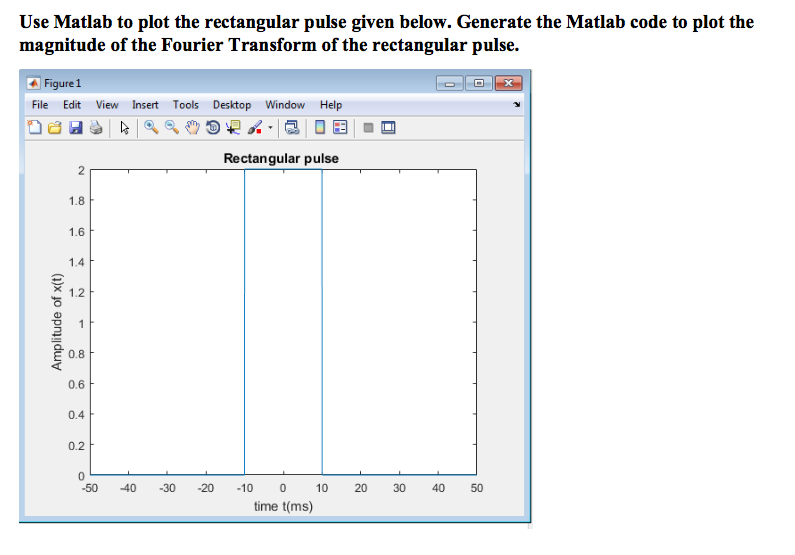

- #APPCODE TO MEASURE PULSE MATLAB HOW TO#
- #APPCODE TO MEASURE PULSE MATLAB MOD#
- #APPCODE TO MEASURE PULSE MATLAB UPDATE#
- #APPCODE TO MEASURE PULSE MATLAB CODE#
#APPCODE TO MEASURE PULSE MATLAB HOW TO#
This example shows how to analyze pulses and transitions and compute metrics including rise time, fall time, slew rate, overshoot, undershoot, pulse width, duty cycle, and pulse period.

Analyze pulses and transitions and compute metrics such as rise time, fall time, slew rate, overshoot, undershoot, pulse width, and duty cycle. Measurement of Pulse and Transition Characteristics. % duration, A - amplitude of sine wave, Pulseduration , Measurement of Pulse and Transition Characteristics. % f - frequency of sine wave, fs - sampling frequency, T - total

= FreqGen(5e2, 20e3, 1, 1, 0.01, 0.1) įunction = FreqGen(f, fs, T, A, Pulseduration, Interpulseduration) So the output is similar to the sum of function(t+d(i), p1, p2. are additional parameters to the function. )Īnd t are time steps for calculating the pulses (also the total time and dimensions of output), d are the pulse centers (shifting deltas) and p1, p2. The syntax is: y = pulstran(t, d, function_handle, p1, p2.
#APPCODE TO MEASURE PULSE MATLAB MOD#
% SIMPLEAPP Interactively explore plotting functions % Choose the function used to plot the sample data to see the % differences between surface plots, mesh plots, and waterfall plots % Create figure windowĭd.A short documentation on pulstran. fs 2.0000e+09 sampling rate this will give you 10 samples per 5 nsec pulse on 5e-9 interval for pulse-on (5nsec for you) cyc 6e-6 cycle (6usec for you) time base: t 0:1/fs:T-1/fs the signal: w mod (t/cyc,1) I created the following public function in the app code space. i have a vector that has square pulses of different durations. In the callback function, access the new drop-down value using the event argument and then use this value to determine how to update the plot data. I have an external Matlab function that I wish to produce continuously update plots in. Define changePlotType to accept src and event in addition to a third input argument that specifies the axes to plot on. You can take different approaches depending on where you are working in App. The signal it self was acquired using an oscilloscope and stored as a cvs file, channel 2 is a pulse signal where i want to evaluate in which. I want to measure the low pulse length of a signal and then plot it to see if the pwm ratio changes during run time of that signal. The first argument contains the component that triggered the callback, and the second argument contains information about the user interaction. A callback is a function that executes when a user interacts with a UI. Matlab measure pulse width and plot over time for jitter evaluation. These input arguments are often named src and event. MATLAB automatically passes two input arguments to every callback function when the callback is triggered. In the simpleApp.m file, after the simpleApp function, define a callback function named changePlotType. In this example, program your app to update the plot when a user selects a new drop-down item. Write a callback function and assign it to an appropriate callback property to control the behavior of your app. Every UI component has multiple callback properties, each of which corresponds to a different user interaction. A callback function is a function that executes when the app user performs a specific interaction, such as selecting a drop-down item. Program your app to respond to user interactions by using callback functions.#APPCODE TO MEASURE PULSE MATLAB CODE#
#APPCODE TO MEASURE PULSE MATLAB UPDATE#



 0 kommentar(er)
0 kommentar(er)
